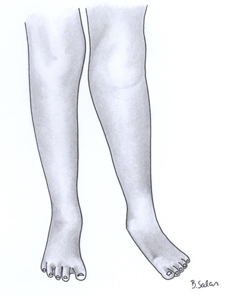Early diagnosis and treatment make a difference
The emergence of biologic agents, as well as earlier and more aggressive treatment approaches, has dramatically changed the way that JIA has been managed over the last 10 years. Many children will do very well on treatment and will go into disease remission. There has been a trend for several years to minimise exposure to systemic corticosteroids which can have side effects (growth retardation, osteoporosis, weight gain and skin changes [striae and hirsutism], cataracts and adrenal suppression).
As soon as JIA is suspected, early referral to specialist teams facilitates prompt treatment and prevention of complications including joint damage, contractures and disability. Early diagnosis and prompt access to the multidisciplinary specialist care can dramatically improve clinical outcomes.
Joint damage and growth abnormalities are common without an early diagnosis and access to effective treatments. In many parts of the world, where access to medicines is limited by cost or availability then such presentations and clinical features are still commonly observed.
The photographs below show extensive joint swelling and deformity in the hands and wrists in polyarticular JIA.
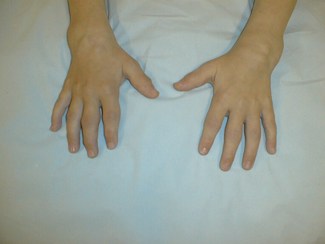
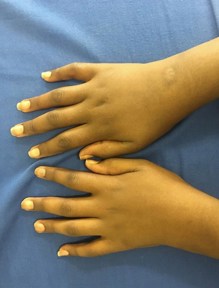
The photograph below shows a blind eye with cataract from JIA related chronic anterior uveitis.
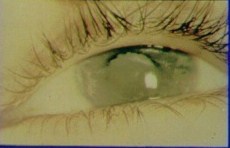
The photograph below shows finger contractures, subluxation at the wrists due to chronic, untreated arthritis
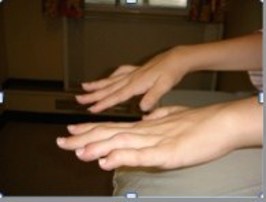
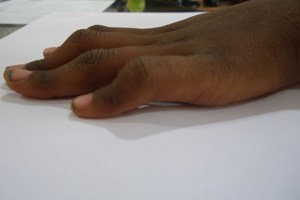
The image below shows muscle wasting in the thighs and calves, valgus (knock-knee) deformity at the knees and mid-foot deformity as a result of untreated JIA.
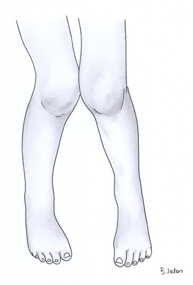 The image below shows valgus deformity at the left knee, muscle wasting (thighs and calves) and swollen knees and ankles in a child with untreated JIA. Asymmetrical involvement of lower limb joints especially the knee can result in leg length inequality with the affected leg being longer and this often results in a valgus deformity and contracture at the knee.
The image below shows valgus deformity at the left knee, muscle wasting (thighs and calves) and swollen knees and ankles in a child with untreated JIA. Asymmetrical involvement of lower limb joints especially the knee can result in leg length inequality with the affected leg being longer and this often results in a valgus deformity and contracture at the knee.
